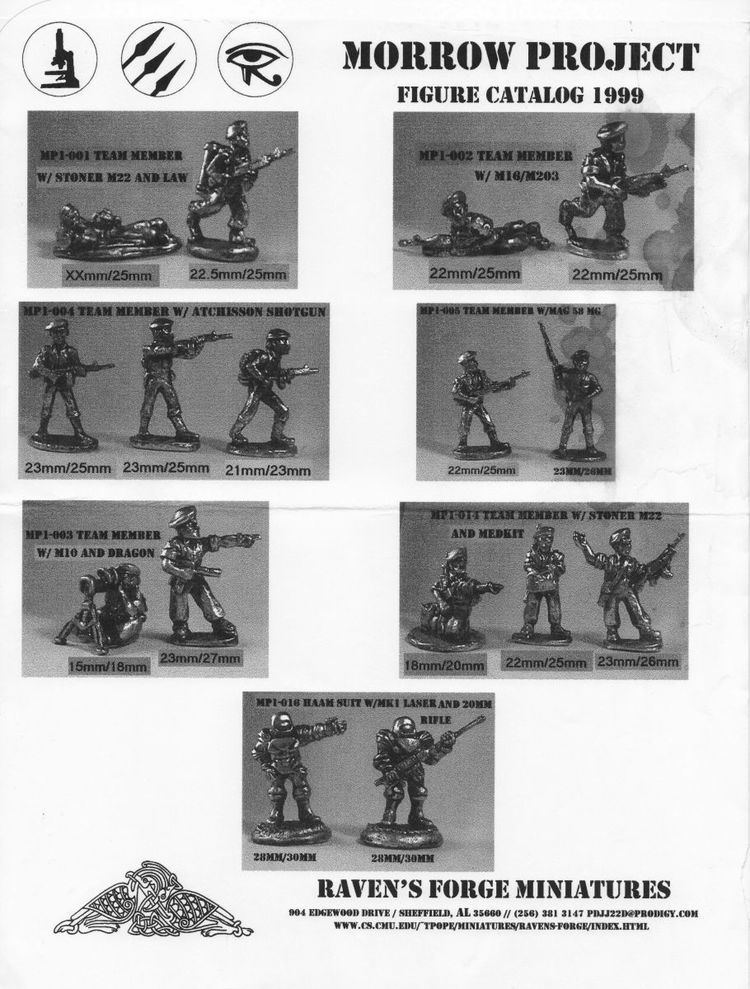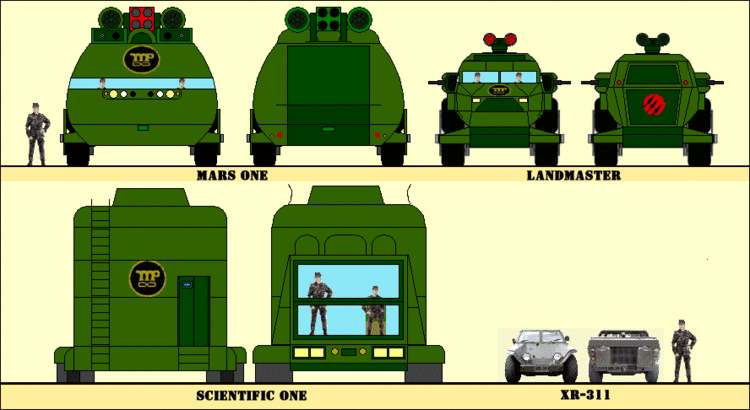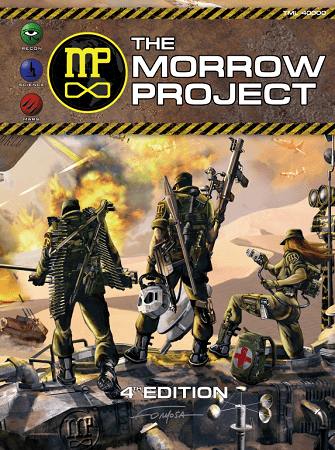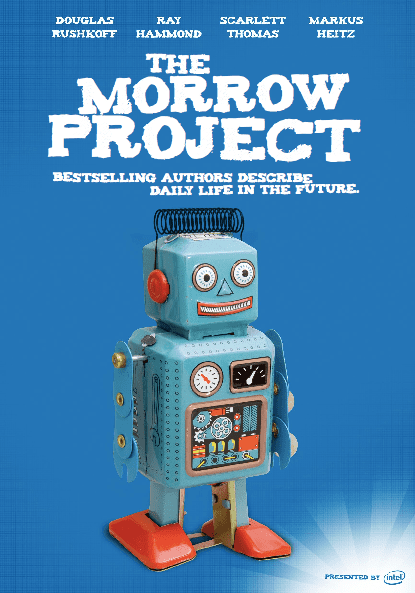Publisher(s) TimeLine Ltd | System(s) TimeLine System | |
 | ||
Designer(s) 1st, 2nd, 3rd Edition:Kevin Dockery, Robert Sadler, Richard Tucholka4th Edition: Chris Garland Genre(s) Post-apocalyptic fiction Publication date 1980 (1st edition); 1980 (2nd edition); 1983 (3rd edition); 2013 (4th edition) | ||
The morrow project
The Morrow Project is a science fiction role-playing game created by Kevin Dockery, Robert Sadler and Richard Tucholka and published by TimeLine Limited. It is set after a devastating nuclear war. It was first released in the 1980s, and it still has a loyal following. The fourth edition was released as of December 15, 2013 by Chris Garland, the head of Timeline Limited.
Contents
- The morrow project
- The morrow project 4th ed pre release
- History
- Setting
- Initial Scenario
- MARS Recon Science and Specialty
- References

The morrow project 4th ed pre release
History

In 1974, Robert Sadler wrote an outline for a post-apocalyptic adventure. Richard Tucholka added a second chapter, but then the project was buried for a year or more. In 1975, they were introduced to role playing, and Tucholka suddenly realized that the Morrow Project could be an adventure background for a roleplaying game. He used Sadler's story as a guide to write that game background. Then the two joined forces with Kevin Dockery to flesh out the military portion of the game.

After months of playtesting, it was run at an early Michicon and became a real hit. From there, Timeline Games was born and shortly thereafter, due to internal conflicts, both Richard Tucholka and Robert Sadler left Timeline Games and created Tacky-Tac Games that later became Tri Tac Games.

In late 2012 after several years of development a Kickstarter campaign was run to provide the funds to finish the 4th edition of Morrow Project. The Kickstarter campaign easily exceeded its goal and finished successfully on January 3, 2013. The new edition was released on December 15, 2013.
Setting
The game is based around the idea that a group of American industrialists predicted the coming of an apocalyptic nuclear war, and began to create a plan for an emergency operations and reconstruction infrastructure that would survive that war. This plan is the eponymous "Morrow Project". A number of volunteers were cryogenically frozen in hidden bunkers called boltholes. They were provided with caches of supplies and equipment, intended to help the teams rebuild civilization—once the war had ended and the resulting nuclear fallout had diminished enough.

The plan was for the Morrow Project to be coordinated by a central command post and record-keeping facility called "Prime Base." This is an immense self-contained bunker with various annexes, hidden underground in Nevada, in the canyons near Soldier Meadow. Its details are explained in the game book entitled "Prime Base." The facility's advanced life support systems and huge variety of other equipment were intended to allow the Project's leaders not to sleep through the war, so as to chronicle it and be in the best position to figure out what should be done next. The Project's "Phoenix Team," a highly secret tier-I special operations unit of approximately platoon strength, was also here, but kept frozen to be used only on the highest authority if there was no alternative.
Prime Base was built in isolation according to schedule, but just before it could assume its role it was sabotaged and bombed by a shadowy madman called Krell, sustaining serious damage. The sudden attack wiped out the Morrow Project leaders, but 150 years after the war, the damaged central computer at Prime Base finally began to issue one or more wakeup signals. This revived at least one of the Morrow Project assets—the team that the player characters are on. The status of other Teams is purposefully kept unclear, so that details can be worked out by the person coordinating the game, who is called the Project Director.
Is the Project hopelessly compromised, or can the scattered outposts reconnect and replace the missing headquarters? Must they try to confront huge reconstruction tasks alone, when it was expected that thousands of Project members would help them? Do they have the courage to try?
Initial Scenario
The initial scenario may be played with nothing other than the game book, dice, paper and pencil. Expansion sets are available introducing further scenarios, weapons and equipment.
One hundred and fifty years after the Third World War, the members of the Morrow Project wake to a strange world. Instead of being part of an organized plan to rebuild their civilization, they find themselves isolated in a world where the War is only a distant legend, the people are ignorant of anything but the struggle to survive and strange mutated animals haunt their footsteps.
Players of the Morrow Project must not only survive, but must carry out their original mission: to rebuild the world. To do this they have their equipment and training, their team and their own guts and imagination. Together with their teammates they must try to do alone a job that thousands were trained to do.
Included in the game book is targeting information for the missiles that fell, full details on Morrow Project teams, vehicles and equipment, weapons, complete medical details, and information about the people and creatures who live in the post-holocaust world.
MARS, Recon, Science and Specialty
While each team is equipped to survive on its own, it proved impossible to equip all the teams for every postwar contingency. For example, some Recon Teams are almost as heavily armed as MARS Teams, while others are not.
With teams having been put to sleep over a course of several years from the 1960s onwards, there will also be variations in the equipment they have. In some cases, teams may wake to find new equipment they are not yet trained on, and will have to teach themselves from instructional materials.
Below is a general summary of the Project groups:
